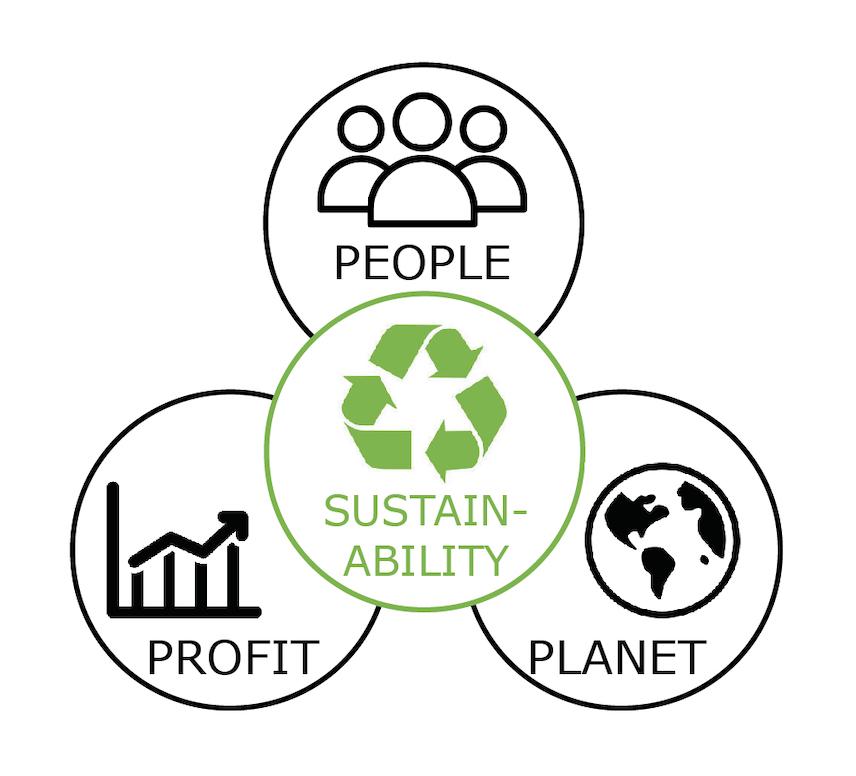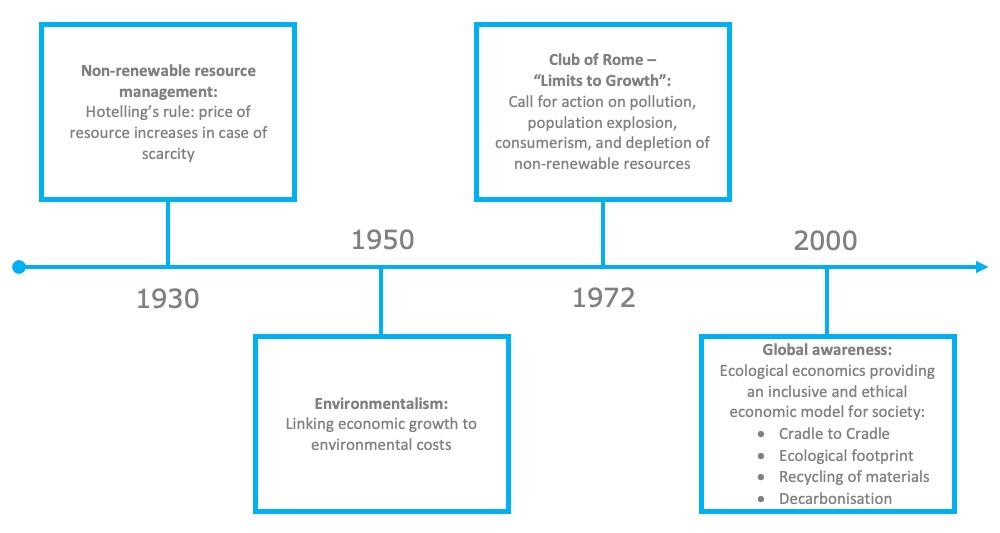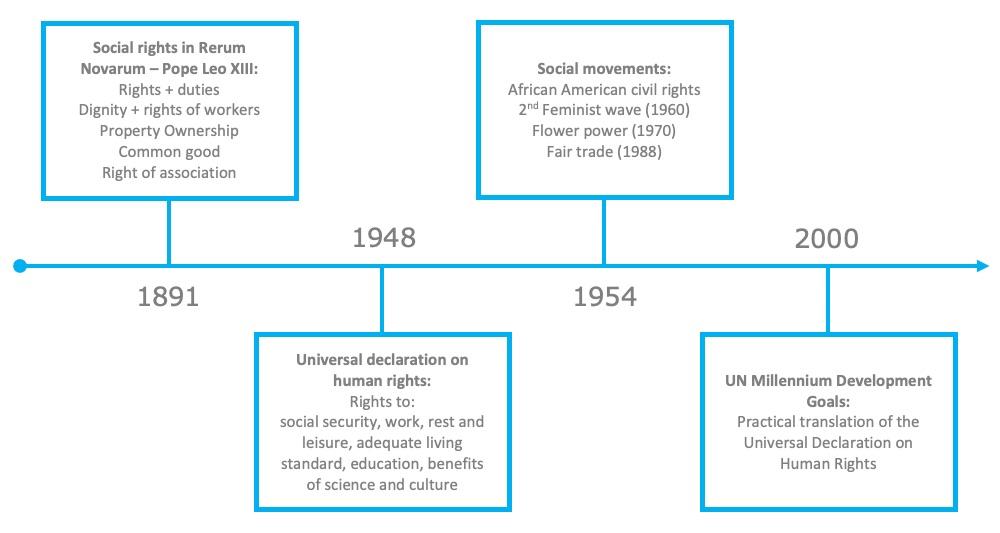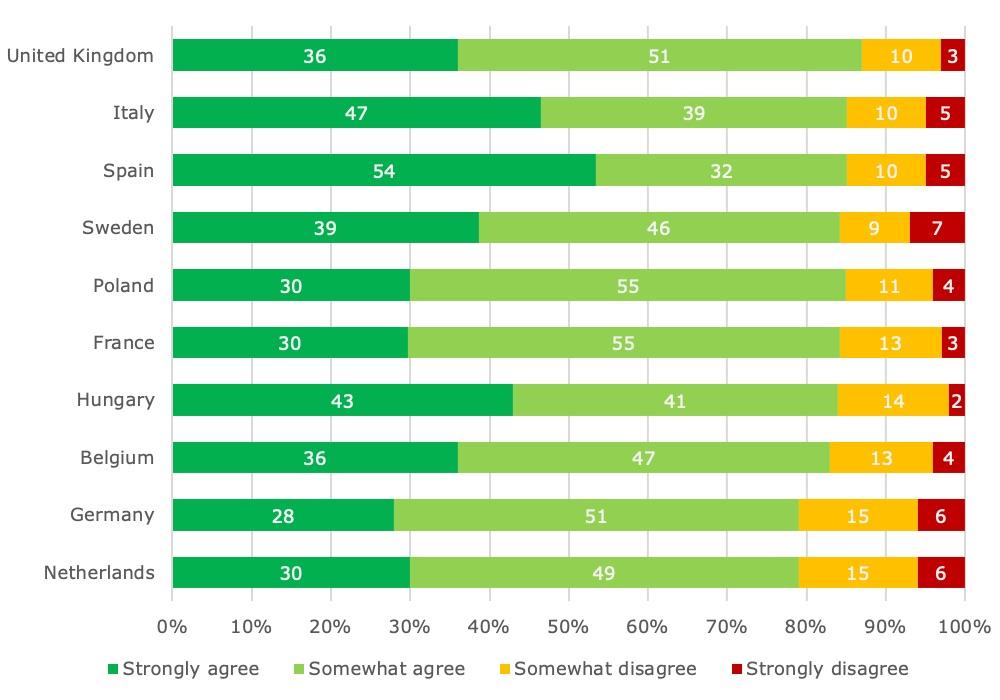
Sustainability in home decoration and home textiles
Sustainability is an increasingly important value in the home decoration and home textiles (HDHT) sector, among both buyers and consumers. As a result, demand for sustainable HDHT products in Europe is growing. To evaluate and manage your sustainable performance, you can use the ‘triple P’ system of people (social sustainability), planet (environmental sustainability) and profit. Obtaining certification or joining an internationally renowned initiative can be a good way to prove you run a sustainable business.
Contents of this page
1. What is sustainability?
The most commonly used definition of sustainability, and sustainable development, is:
based on the 1987 United Nations Brundtland Commission Report (Our Common Future).
The United States Environmental Protection Agency EPA elaborates that “sustainability is based on a simple principle: everything that we need for our survival and wellbeing depends, either directly or indirectly, on our natural environment.”
There are 3 generally recognised components of sustainability: social, environmental and economic sustainability. These components should be integrated for a true sustainable approach.
What sustainability means for your business
A simple and effective way to evaluate and manage your sustainable performance is through the triple P system, which reflects the social, environmental and economic components. It consists of 3 pillars:
- People
- Planet
- Profit.
Figure 1: The triple P system of sustainability

Source: Remco Kemper
When your approach integrates the 3 Ps, you are on your way to building a sustainable business.
People
For businesses, this social side of sustainability consists of fair practices towards labour and the community. You should always keep in mind that the wellbeing of your company, your employees and other stakeholders all depend on each other.
Planet
This pillar focuses on environmental sustainability, reflected in environmentally friendly business practices. In your production (and export) processes, you should do no harm to the environment and minimise the negative environmental impact of your business.
Profit
The profit side of your business consists of the economic value created by your organisation after deducting the cost of all inputs. It contains all actions you can undertake to lower your cost and increase your productivity and output and your impact in the market, based on the integration of the social and environmental Ps. Using less energy, for instance, lowers your cost as well as the environmental impact of your company. As another example, increasing the wellness of your labour force should also benefit their (and, consequently, your) productivity.
A brief history of sustainability
Being familiar with the history and theories of sustainability will help you understand the drivers behind sustainability. This, in turn, will help you in your conversations with buyers or potential buyers.
Figure 2: The history of environmental sustainability

Figure 3: The history of social sustainability

Looking ahead
Sustainability is increasingly becoming a requirement, rather than a voluntary commitment. To enter the European market, you must comply with specific legal and market requirements on health and safety. As sustainability continues to become the standard, such requirements increasingly include issues related to social and environmental norms.
European trade law already includes norms related to the protection of endangered species, and there are unilateral agreements about the traceability of wood. Now, the European Union is working on a new ‘due diligence’ system. These new rules require companies to identify, address and remedy any infringements or potential infringements on human rights, the environment and good governance throughout their value chain. These due diligence obligations could apply to any company that wishes to access the European internal market.
With the European Green Deal, the European Union strives to become climate neutral by 2050. A main building block of this is 2020’s Circular Economy Action Plan. In a circular economy, waste is eliminated via concepts such as reuse, refurbishment and recycling. The action plan includes the intention to launch a new Strategy for Textiles to boost the European market for sustainable and circular textiles.
More short-term, COVID-19 has shown that global distribution patterns are vulnerable. This, too, has made people realise that value chains must become more transparent, safer and perhaps also shorter. Who is making the product and how? What are transport lines, and can they become less complex? Can we buy closer to home? Such questions are raised and will lead to action to lower the social and environmental footprint of global trade.
Last but not least, the market itself is increasingly demanding social and environmental change from the business community. The new millennial and Gen Z consumers want to buy from companies that contribute to a better world and are transparent and activist (see trend section). For this dominant consumer group, social and environmental value is an important selling point. They prefer companies with a positive record on diversity and inclusivity, as well as green values and practices.
Tips:
- Follow the international news and discover what political, economic, social, technical, legal and ecological factors help or hinder sustainable business and consumerism. Changes in global society have been at the heart of sustainable development and still very much influence social and environmental norms and the pace at which they are adopted. Magazines such as Time, Newsweek and the Economist or news outlets such as the BBC, CNN and Al Jazeera are important sources.
- Stay up to date on the European regulatory framework, which consistently moves ahead to protect the European consumer. Use your HS code(s) to request the specific legal requirements for your product group in the Access2Markets system.
- Where it makes sense, consider certification of your process and/or product group, as an additional form of quality assurance to your distributers and resellers. See also the next section.
2. Sustainability certification programmes and initiatives
To prove you run a sustainable business, you can obtain certification or join an internationally renowned initiative. This can be rather costly, especially for small and medium-sized enterprises (SMEs) from developing countries. Luckily, most European buyers do not demand certification. You can, however, use these standards to familiarise yourself with their requirements and comply where possible. This also gives you an idea of what aspects of sustainability you should focus on in your communication.
Among European buyers, the most popular initiatives are:
- Business Social Compliance Initiative (BSCI): European retailers developed this initiative to improve social conditions in sourcing countries. They expect their suppliers to comply with the BSCI Code of conduct. To prove compliance, the importer can request an audit of your production process. Once a company has been audited, it is included in a database for all BSCI participants.
- Ethical Trading Initiative (ETI): this initiative is an alliance of companies, trade unions and voluntary organisations. It aims to improve the working lives of people across the globe that make or grow consumer goods.
- Sedex: this membership organisation strives to improve working conditions in global sourcing chains. It offers a collaborative platform where you can share information on your ethical and labour standards with buyers or potential buyers, based on a Self-Assessment Questionnaire (SAQ).
Although these initiatives do not provide certification, they are a clear and well-known signal to European buyers that your business is sustainable.
ISO 14001 and SA8000 are actual sustainability certification standards. ISO 14001 sets out a framework for setting up an effective environmental management system, while SA8000 focuses on the fair treatment of workers.
Another option is to work with certified sustainable materials. For wood, there are 2 key certification programmes:
- Forest Stewardship Council (FSC): this is the most common certification for sustainable wooden products and paper. It guarantees that a product’s source material comes from responsibly managed forests. To manufacture FSC-certified products, you need Chain of Custody certification. If you use recycled wood or paper, you can apply for the FSC Recycled label.
- Programme for the Endorsement of Forest Certification (PEFC): this organisation’s chain of custody certification also verifies that the certified forest-based material contained in a product comes from sustainably managed forests.
For organic textiles, the most common labels are:
- Global Organic Textile Standard (GOTS): this is a textile-processing standard for organic fibres, ensuring environmental and social responsibility throughout the production chain of textile products.
- OEKO-TEX: Standard 100 certification guarantees that no hazardous chemicals are used in the production of textiles.
- Ecolabel: this label from the European Union looks at the use of environmentally friendly chemical options and is only awarded to products with the lowest environmental impact in a product range.
- Nordic Swan Ecolabel: this label is used for textile products in Sweden, Norway, Finland, Denmark and Iceland.
There are also several certification programmes specifically for the rug and carpet industry, with special attention for child labour:
- GoodWeave (formerly known as Rugmark): this organisation works to end child labour in South Asia’s carpet sector and is also implementing a pilot project in India’s general home textile industry.
- STEP: this label for fair trade handmade carpets produced in Afghanistan, India, Iran, Nepal, Pakistan and Turkey focuses on good working and living conditions, fair wages, eco-friendly production and the prohibition of child labour.
- Care & Fair: this initiative of the European carpet trade aims to combat illegal child labour and improve the situation of carpet weaving families in India and Pakistan.
Finally, you can consider fair trade certification. The concept of fair trade supports fair pricing and improved social conditions for producers and their communities. Especially when your production process is labour intensive, fair trade certification can give you a competitive advantage. Common fair trade certification schemes are from:
For most fair trade-oriented buyers in Europe, however, simply complying with WFTO’s fair trade principles is sufficient.
Tips:
- Optimise your sustainability performance, determine which certification programme would be the best fit for you and apply for it if you can. Studying the issues included in these sustainability initiatives and standards will give you an idea of what to focus on, even if you do not plan to become certified.
- Prove your sustainability performance to your buyers or potential buyers through careful documentation. For instance, you can use a self-assessment like the BSCI Producer Self-Assessment, Sedex’s SAQ and ITC’s Standards Map tool, or a code of conduct such as the BSCI Code of Conduct and the ETI base code.
- Ask buyers what they are looking for. Especially in the fair trade sector, you can use the story behind your product for marketing purposes.
- For more information on certifications and how to apply, see our study about buyer requirements on the European HDHT market.
- Be aware that, while a good sustainability performance can currently be considered as an extra selling point, it may become a requirement in the medium to longer term.
3. Trends in sustainable HDHT
People – social sustainability
The millennial consumer
The millennial consumer will soon be the dominant consumer worldwide. A big chunk (not all!) of this group has climate change as their number 1 concern. Millennials are different in that they are willing to share possessions, rather than owning them. They ‘vote with their wallet,’ purposely buying from brands that make a stand. Diversity is another core issue for this generation. They distrust traditional marketing and rather rely on peer reviews. Clearly, millennials are in search of contributing to a better world (their future) through consumption.
Key questions related to the people side of sustainability can include:
- How can you improve the social aspects in the cultivation and purchasing of your raw materials (safer, healthier, fairer)?
- How can you offer staff and workers better working conditions and remuneration?
- How can you make the physical distribution of your goods more transparent and fairer?
- How can you help your chain partners to help consumers in using your products longer?
- How can you design your product to assist the end consumer in responsible disposal at the end of the product’s lifecycle?
What do you stand for?
Increasingly, consumers expect businesses to make a stand. The key question is: how do you, as a business, contribute to a better world?
The demand on businesses by consumers has evolved from ‘guilt-free’ buying (”I want to avoid buying products that are bad for the people and the planet”) to a more positive impulse (“what can I contribute?”). There is a willingness to be an active consumer by buying less, ‘greener’ and more ethical and to discuss considerations online and with friends. Today’s attitude is more activist: ‘green-shaming’ means putting pressure on businesses if they are slow to adopt an active stance or make promises they do not (or cannot) keep.
Status
To buy responsibly, and to make sure you are seen to do so by your peer group, has become an important driver of sustainable consumerism. By doing good and receiving recognition for their broadmindedness, consumers feel doubly rewarded. Also, in luxury segments, ‘green’ and status are now important incentives for consumers, which will make sustainability a consumer need in the longer term as well.
Cultural expression
With globalisation comes a greater mix of cultural expressions in HDHT. Consumers are opening up to colours and patterns that come from other cultures and origins, and designers are, often unknowingly, using patterns from material cultures other than their own. At the same time, there is an intense discussion about to what degree this ‘borrowing’ from another culture is appropriate. Linked to this is the authenticity that comes with a handmade product made in a traditional manner.
Tips:
- Follow the shopping behaviour of the millennials and, increasingly, the Gen Z age group. Social media are key here, as these generations ‘live’ online. They review products for their peer group, follow influencers and are clear about their needs. How do these needs develop and how will this affect your business?
- Communicate your sustainable values well, in all the media you employ (website, social media, B2B platforms) and help your distribution partners to use your stories.
- What techniques, materials and stories can you use that originate from your culture and could be incorporated into a contemporary offer for the European market?
- Be aware that sustainable products have become intertwined with another huge trend: wellness. Consumers get an emotional boost from buying products that contribute to a better world. Increasing their insight into production processes and learning from maker and making stories helps consumers to increase their knowledge and awareness – a key driver of wellbeing.
Planet – environmental sustainability
Alternative materials
1 market trend resulting from this is the sourcing of ‘alternative’ materials – materials that are more sustainable options.
There are 3 directions in which a more sustainable and circular approach to production and consumption is attempted:
Harvesting abundance
Biological by-products of the agricultural industry are converted into sustainable materials and end products for consumption by industries and consumers. At the same time, designers are finding innovative applications for natural products that had not previously seemed exploitable.
Engineering nature
The ‘natural’ world as we know it today is in fact already largely a man-made creation. The industry is finding ways to engineer nature: through technology in the lab, by unlocking the deeper, more hidden qualities of natural resources or by steering growth. Examples are using bacteria and DNA to manufacture cleaner dyes and faux leather.
Rethinking waste
Recycling and upcycling are well-known methods of creating new raw materials and new products. Today’s redundant products are being reassessed as tomorrow’s raw material. Pre and post-consumer and post-industrial waste are turned into new, sustainable materials and end products. Designers play an important role in this process, rethinking products from the perspective of sustainability. The ultimate goal is circular design, allowing products and materials to be reused, refurbished and recycled again and again, thus eliminating waste
Recycling and upcycling materials from consumption and production in your country provides you with a major opportunity. Waste materials or offcuts from industry are often readily available and relatively inexpensive, and the market is ready to embrace such concepts.
Figure 4: Ikea’s Tånum – the handwoven rug made from fabric leftovers
Source: Ikea @YouTube
As the market for recycled products grows, it also becomes more segmented. This means you can create concepts for the lower-end volume market, focus on a colourful mid-market or go high end. Price and value differ for each segment.
Lean and clean production
In addition to using sustainable materials, you can also make other aspects of your business more environmentally friendly. When planning your production site, you can also consider using energy from renewable sources, such as solar power. When you use a lot of water in production, for instance for dyeing textiles, collecting rainwater is an option that is both cheaper and does not extract water from the ground. Essentially, limiting the use of raw materials and other resources in production reduces the negative impact your manufacturing process may have on the environment.
Tip:
- Think about how you can produce your existing portfolio of products more efficiently and therefore more sustainably. For new products, consider sustainable production from the onset of the development process.
Profit – business and commercial sustainability
You should realise that a sustainable approach can also increase efficiency, which will help you to achieve better margins. Recycled raw materials often cost less than ‘new’ raw materials. Minimising your use of resources such as water and energy also saves costs.
Generally speaking, the less energy you use in production, the less resources you require. And the more you recycle, the more efficiently you can produce. Next to the fact that your environmental impact will be a lot smaller, you also save money in the process, which leads to better margins.
The design of your product is an integrated part of this approach. Whenever you work on a new design, you should also think from the perspective of production: the new product should capitalise on your strengths in production and avoiding mistakes during the manufacturing process. Making mistakes in production is a costly affair – ‘rejects’ and ‘redoing’ generate extra costs, both environmentally and financially. At the same time, integrating design and production planning in such a way that you reduce waste as much as possible further decreases your costs and environmental impact.
Increasing efficiency in production is an ongoing process, and every small improvement helps to further boost efficiency. Consider rethinking your existing methods of production to see where you can improve upon your performance.
Tip:
- Think about how you can produce your existing portfolio of products more efficiently and therefore more sustainably. For new products, consider sustainable production from the onset of the development process.
4. The European market for sustainable HDHT
Although no data are available for the exact size of the market for sustainable HDHT products, demand is clearly present and growing.
European demand for sustainable products is high
A 2019 ITC study on the European market for sustainable products, including household and office furniture, suggests that more than 10% of retail sales may be sustainable. The survey focused on companies from France, Germany, Italy, the Netherlands and Spain, which are likely to be fairly representative of the Western European market. As Northern and Western European countries are rated the most sustainable in the world, their demand is likely to be on the high end of this estimate. Conversely, Southern and Eastern Europe may lag slightly behind.
Almost all (98.5%) of the surveyed companies consider sustainability as a factor in product sourcing. An impressive 76% have concrete commitments to source a certain percentage, number or volume of products or raw materials sustainably. This type of commitment is indeed reported more often in Western European countries than in Southern Europe, but even there, it concerns most companies.
The market is expected to grow
The ITC research also revealed that 92% of retailers expect sales of sustainable products to increase in the next 5 years. Of these companies, 74% expect growth to be more than 10%, which is more than the 65% that reported an increase of more than 10% over the past 5 years. This illustrates that the trend of sustainability will be accelerating in the coming years.
The expected growth fits in with a 2020 IBM study, in which 77% of consumers find it moderately to very important that brands are sustainable and/or environmentally responsible. Most are willing to change their purchasing habits to help reduce negative effects on the environment. By increasing awareness of the importance of sustainability, the COVID-19 pandemic seems to be boosting this shift. According to the World Economic Forum, 86% of people want significant change to make the world fairer and more sustainable after COVID-19.
Figure 6: People who want the world to become fairer and more sustainable after COVID-19*, in %

* Response to the statement “I want the world to change significantly and become more sustainable and equitable rather than returning to how it was before the COVID-19 crisis”.
Source: World Economic Forum/Ipsos
This implies an increasing interest in both environmentally and socially sustainable (fairly traded) products.
Tip:
- For trade figures from the sector in general, see our study on the demand for HDHT in the European market. For more detailed information, see our product-specific studies.
This study was carried out on behalf of CBI by Globally Cool B.V. in collaboration with GO! GoodOpportunity and Remco Kemper.
Please review our market information disclaimer.
Search
Enter search terms to find market research